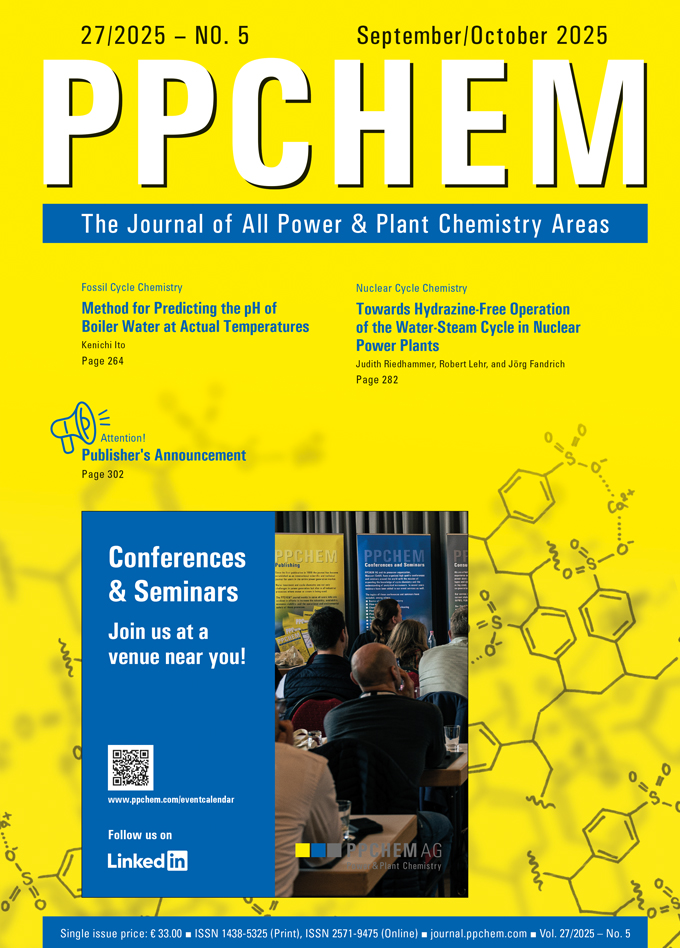
For members only
ABSTRACTS
Method for Predicting the pH of Boiler Water at Actual Temperatures
Kenichi Ito
Normally, the pH of boiler water is controlled based on the pH at 25 °C. However, since the dissociation constants of water, acid components, and alkaline components vary with temperature, the pH behaviour at high temperatures differs significantly from that at 25 °C. The author developed a calculation program using the Microsoft Excel® macro function Visual Basic for Applications (VBA) to theoretically predict the pH of boiler water at actual temperatures (pHT).
As an application example of this program, the relationship between temperature and pHT for various alkalising agents as well as the relationship between the dosage of each alkalising agent and pH300°C were shown. The results indicated that ammonia and alkalising amines have lower alkalising capabilities at high temperatures compared to Na3PO4 and NaOH. Additionally, the example shows the relationship between the concentrations of acidic substances (HCl, acetic acid, formic acid, and orthosilicic acid) and pH300°C when using each alkalising agent.
PPCHEM® 2025, 27(5), 264–274
For Members only
Towards Hydrazine-Free Operation of the Water-Steam Cycle in Nuclear Power Plants
Judith Riedhammer, Robert Lehr, and Jörg Fandrich
Hydrazine is used in water-steam cycles of pressurized water reactors to protect the steam generators by generating reducing and oxygen-free conditions. However, growing regulatory and environmental concerns about its toxicity and mutagenic properties are leading to actions to restrict it or completely phase it out. Additionally, the declining availability of nuclear-grade hydrazine has led to supply shortages and disruptions in some cases.
To further ensure the material integrity of nuclear steam generators, this paper describes possible alternatives to hydrazine by leveraging the radiation field within nuclear steam generators. Theoretically, low-molecular-weight compounds comprising carbon, hydrogen, oxygen, and optionally nitrogen are capable of reacting with oxygen by undergoing a radiation-induced reaction. Experiments under steam generator conditions have confirmed methanol and ethanolamine as effective reductants, as they lower the redox potential and the corrosion potential of the most common nuclear steam generator tubing materials, as well as oxygen levels. Both chemicals have already been used in the nuclear industry.
PPCHEM® 2025, 27(5), 282–294
For Members only
Publisher’s Announcement
A New Chapter: The PPCHEM® Journal Goes Fully Digital in 2026
After more than two decades of continuous print publication, we would like to inform you that the PPCHEM® journal will discontinue its print edition at the end of 2025. The final printed issue will be Issue 6, scheduled for publication in December 2025. This decision reflects a broader shift in how our readership consumes content and the increasing demand for more flexible, accessible, and sustainable digital formats. While the printed journal will come to an end, PPCHEM® will continue to provide high-quality content through its online platform, maintaining our commitment to professional knowledge sharing.
PPCHEM® 2025, 27(5), 302










